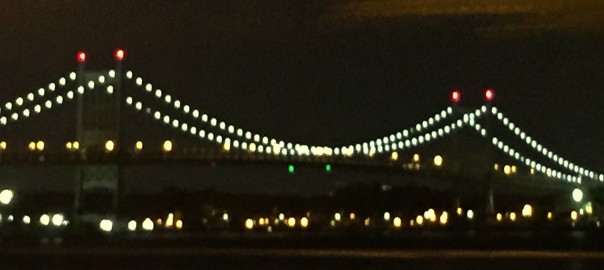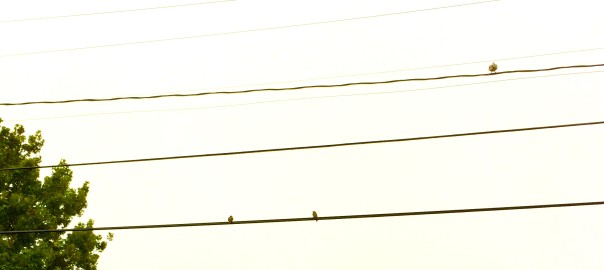|

|

The Standard Advertising Units are meeting new standards, as the IAB releases its new portfolio of Flexible Ad Units, including Virtual Reality, Augmented Reality, and other formats, spanning the latest in social media, mobile video (vertical! 360-degree!) and even emoji.
The biggest change is from fixed pixel sizes to aspect ratios. This may not be a big deal this week, but like the transition from Flash to HTML5 it will be changing our lives very soon.
MediaRadar says more native is being purchased while programmatic spending is down.
This is partly due to brand safety concerns but performance plays in, our own experience suggests.
Print continues to descend – but readers gonna read. It’s not dead yet, especially among the kinds of readers who buy hardcovers.
A fuller look at ad spends this quarter HERE
Giving the people what they didn’t know they wanted.
“It requires a lot of tracking resources, which is not an easy thing to do, but success on the web is not easy either.”
Help them to be watched still more.
Takeaways: Know what your audience knows and use that to tell a story they’ll relate to. (Bonus: spend lots of money.)
Application: Utilize comps, fonts, art, and language to build familiarity, and if possible subvert the viewer’s expectations in a rewarding (amusing) way.

The next job to be obsoleted by technology will be the copywriter, says Mark Duffy of Digiday. Your ninja can’t stop this!
Pinning down just what “native” means can be tricky. But we at Verso have seen concrete results in native units using images that suggest non-advertising content.
“Imagine if the advertising-supported ecosystem went away,” she said.
Linda Yaccarino, head of advertising sales for NBCUniversal, on what is needed to compete with Google, Facebook, Twitter, Amazon, in an era of declining ad revenue.
Identify the “real audience” . . .
After a year of Facebook Live, the New York Times sees fewer views but more comments.

A few words — or even a few dots — can make a big difference. Compliments of a PAMA Facebook post, BookBub’s 8 Book Description A/B Tests You Need to See …
Emma Watson and the Station of Secrets.
Watch:
Find out how the podcast boom can favor and disfavor diversity in this Columbia Journalism Review article.
Also check out:
10 great podcasts to diversify your listening lineup
Programmatic is like a planet. We live on the thin surface layer but most of the hot stuff is under the surface.
“Facebook just executed what might best be described as a digital advertising coup against rival Google and its DoubleClick empire” by letting publishers use header bidding technology. This could raise ad costs but increase yield, says AdAge.
Drill a hole and peek into the Magma
Or simply find out:

As the holiday season lights the way from one year to the next, this week’s ad news gives us a glimpse of what’s working, what’s not working, and what’s worth testing.
BBDO has run a study of the best performing banner ads. What they learned is worth noting:
#banners #bestpractices #creative
In a recent announcement, Facebook admitted to more errors in reporting likes, reactions, and shares. While we applaud their transparency, it underscores how digital reporting is built on an inherently opaque set of data. There remains an enormous amount of trust involved in seeing data from advertising partners who have an incentive to inflate results.
Instagram has introduced a new feature that allows you to save photos from your timeline. This will be a nifty feature for users, but is perhaps even better for businesses since it makes it easier for consumers to bookmark products they like so they can look at them later.

Facebook is not Twitter is not Instagram is not Snapchat. This Click Z post helps you craft your voice to the social network you use.
Creativity is crucial to advertising (duh). But classic brainstorming methods don’t always bring out the best in your team. Especially if you have a good number of super creative introverts in the room (cf. Susan Cain’s Quiet). Hub Spot posted several good and different ways to generate new ideas.
Combining LinkedIn’s targeted business readership with the power of email marketing makes the new in-mail targeting option a very interesting one for reaching the business audience.
Caveat emptor: campaign data is crucial if it’s accurate, but there remains a good amount of question about how accurate the numbers are. The most powerful companies in the world also have a worrying tendency to be walled gardens re: their data. “Just trust us” is not a line that should go very far with any responsible media buyer.
We saw this coming. And despite our concerns about measurability (see above), we welcome ads that reach readers wherever they are—and a lot of people are using Messenger.
Photo of this week's Union Square Subway Station post-election post-it wall (c) 2016 Martha Otis

Commenting on a study of native advertising click-through rates, Media Post is surprised to see that native ads do better on mobile. We are not. Mobile remains the best platform for high engagement—and not just because of mistaken clicks:
“The research found that click-through rates (CTR) for premium native ads were highest on smartphones, at 0.38% in 2015, while tablets saw an average CTR of 0.33%. Native ads on desktop computers saw CTR rates of 0.16%.”
72% of Spotify listeners are Millennials, and they’re listening mostly in the afternoon. Here’s a link to Adweek’s infographic on the Spotify audience and its listening habits.
Creatives should have their eyes and ears wide open, looking everywhere for inspiration, including Reddit. Just remember, that if you’re using someone else’s idea (especially when you use it word-for-word), you should pay them. Ask Axe.
A little reminder from Google that easy assumptions about demographics—such as, “only men are interested in video games” or “only people with babies in the house buy baby products”—are often overturned when you look at the data.
#data #demographics #targeting
Digiday reports that Facebook is testing commercials in their live stream.

As the New York City sidewalks become forests of blue spruce and Canadian tree sellers and the Rockefeller Center tree lights up the night, the world of digital advertising continues to evolve. Here are links to some of the most relevant ad news we’ve seen this week:
Nieman Lab reports that, despite the sturm und drang, adblocking for mobile is currently not a factor, though it is affecting desktop:
“The good news from publishers’ perspective is that the mobile ad apocalypse does not seem to have arrived — yet, at least. While most publishers we spoke with were reluctant to share specific numbers on the record, most said that the share of their ads being blocked on mobile since iOS 9 launched in September was minuscule — ‘1 or 2 percent’ was the range we heard most often. The big concern is still on the desktop.”
Digiday reports on how the Guardian’s digital team is going after the global sports audience. With the growing U.S. market interest in the English Premier League, this could make it a good venue for the right book.
Twitter’s “Moments” channel has a lot of promise, especially when advertising around live events such as sports or presidential election days. As with most new high profile platforms, the bar for entry is too high for book publishers: a cool million. But over time those prices will come down. Meanwhile we can see how the high cost Starbucks, REI, and Verizon campaigns perform now, while thinking about what we want to do more efficiently down the road.
#newplatforms #twitter #social
The social media giant introduced a live streaming platform that will compete with Periscope and Meerkat. Given their user base, this is definitely a platform that’s worth watching.
YouTube, Snapchat, and Instagram are at the top of this survey of social media that teens find “cool.” But while Facebook is only the seventh coolest in the list, teens still use it:
“A new study from research firm Forrester found that while only 65% of 12 t0 17-year-olds consider the social network “cool,” (ranking it below most other popular apps), it still generates more “hyper usage” than Snapchat, Instagram, or Twitter. About 61% say it’s the social network they use the most.”
In a study sponsored by Google, HBR looked into the impact of mobile activity on brick and mortar stores. Among the findings: 28% of in-store sales were influenced by mobile activity before or during the purchase, and top uses included searching for a local retailer who carried the item (39%) or taking a picture of an item to ask a friend or family member for an opinion (38%).
For the first time, Snapchat is allowing companies to “deep link” to content shared on Snapchat from elsewhere. As Digiday reports:
“Until now, Discover publishers couldn’t link to their Snapchat pages from anywhere outside the app. With the benefit of social media promotion, they are likely to see a boost in traffic. It is similar to how YouTube creators expand their audience by sharing video links to third-party platforms.”
Are the best years of banner ads in the past or in the future? AdWeek makes a case for programmatic creative.

This week’s links are dedicated to the idea that, whatever its form—voice, image, written word, or metadata—the art of advertising is the art of communication.
According to programmatic powerhouse AppNexus, ads seen on desktop computers still see the majority of ad impressions compared with mobile. The positives to the platform — especially marketer familiarity and having a bigger canvas to work on — mean it’s still the go-to platform for most digital ad campaigns. On a side note, the journalist for ClickZ reports one of the desktop advantages being its click-through rate, “relatively robust with 0.043 percent CTR.” That may be the average click-through rate throughout all desktop banner advertising, but our benchmark CTR is 0.1 percent.
What do you do if your handful of four star reviews is a little short of decent authoritative reviewers? Here’s one way you could go: “A promo for the new Tom Hardy movie hid a negative 2-star review in plain sight.” We don’t condone this behavior! It’s clever, for sure, but a kind of one-off clever that puts a serious dent in your legitimacy with reviewers and consumers.
Instagram ups its maximum video length from :15 to :30, and allows posting in landscape mode as well as portrait. Whether longer video leads to better performance is another question.
An early look at Instagram ad performance from Salesforce: Compared to Facebook, Instagram delivers fewer impressions but a higher click-through rate.
Will Apple’s mobile ad blocking block native ads as well as banners? This question is all the rage in advertising circles. We are sanguine about any potential changes. The best advertising proceeds by adaptability and curiosity, not panic.
Google is “punishing” (Business Insider’s word) YouTube viewers who use ad blocking software by not allowing them to skip pre-roll ads. Here’s some free advice: If you’re creating ads that feel like punishment to watch, you’re doing it wrong.